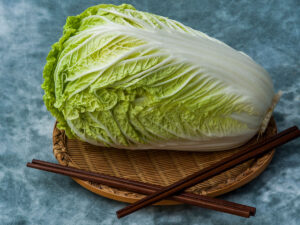
Transplanting ‘Tabaluga’ Chinese cabbage involves specific steps to ensure successful growth. Chinese cabbage, including the ‘Tabaluga’ variety, is known for its quick growth and is a popular choice for salads and Asian cuisine. Here’s a guide to help you transplant ‘Tabaluga’ Chinese cabbage:
1. Seedling Preparation
- Start with healthy ‘Tabaluga’ Chinese cabbage seedlings. They should be about 4-6 weeks old with strong stems.
- Harden off the seedlings by gradually exposing them to outdoor conditions over a week.
2. Optimal Transplanting Time
- Transplant in early spring or late summer. Chinese cabbage prefers cooler temperatures and can bolt (go to seed) in hot weather.
3. Soil Preparation
- Chinese cabbage thrives in well-drained, fertile soil with a pH between 6.0 and 7.5.
- Enrich the soil with compost or well-rotted manure before planting.
4. Transplanting
- Space the plants about 12-18 inches (30-45 cm) apart in rows that are 18-24 inches (45-60 cm) apart.
- Plant the seedlings at the same depth they were in their containers.
- Water the plants well after transplanting.
5. Watering and Care
- Keep the soil consistently moist. Chinese cabbage needs regular watering, especially in dry conditions.
- Mulch around the plants to maintain moisture and suppress weeds.
6. Fertilization
- Apply a balanced fertilizer a few weeks after transplanting to encourage growth.
- Avoid high nitrogen fertilizers late in the season as this can lead to leafy growth and poor head formation.
7. Pest and Disease Management
- Watch for pests like aphids, cabbage loopers, and flea beetles.
- Use appropriate pest control methods, and practice crop rotation to prevent soil-borne diseases.
8. Harvesting
- Harvest ‘Tabaluga’ Chinese cabbage when the heads are firm and reach the desired size, typically 50-70 days after transplanting.
- Cut the head off at the base with a sharp knife.
9. Aftercare
- After harvesting, clear the area of plant debris to reduce the risk of disease.
Growing ‘Tabaluga’ Chinese cabbage can be very rewarding, especially for its unique flavor and texture. As with all gardening, local conditions such as climate and soil can affect the growth, so it’s a good idea to consult with local gardening experts or an agricultural extension service for region-specific advice.





Reviews
There are no reviews yet.